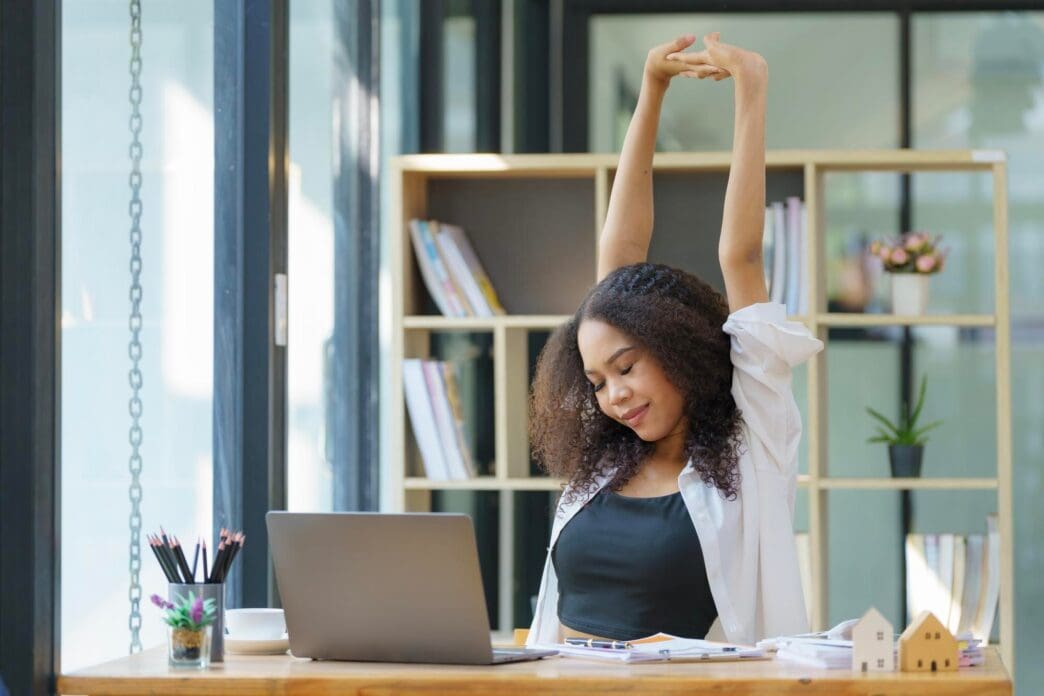A Quick Takeaway
The Story Behind the Trend
How to Make It Work for You
The Community View
Transforming your lunch break into an energizing oasis is not only possible but highly recommended for anyone spending significant time at a desk. Desk workouts, a series of simple, low-impact exercises performed in or around your workspace, offer a powerful antidote to the sedentary nature of office life. They are designed to boost circulation, alleviate muscle stiffness, enhance mental clarity, and provide a much-needed energy surge, all within the confines of your workday and without requiring special equipment or a change of clothes. Integrating these movements into your midday routine is a strategic way to combat the afternoon slump, improve overall well-being, and sustain productivity throughout the day.
The Sedentary Trap and Its Toll
Modern work culture often demands prolonged periods of sitting, a habit increasingly linked to various health concerns. Extended sedentary behavior can slow metabolism, impair circulation, and contribute to muscle imbalances and chronic pain, particularly in the neck, shoulders, and lower back. It also often leads to feelings of sluggishness and decreased focus, making the afternoon hours particularly challenging.
Counteracting these negative effects requires intentional movement. Even short bursts of physical activity can significantly mitigate the risks associated with sitting. These brief movements serve as vital interruptions to the stillness, signaling to your body and mind that it’s time to re-engage.
Why Your Lunch Break is Prime Time for Movement
Your lunch break offers a natural, built-in window for physical activity without disrupting your core work schedule. It’s a designated pause that can be repurposed to serve your health and energy levels. Rather than simply eating at your desk, dedicating even 10-15 minutes to movement can dramatically alter the trajectory of your afternoon.
This mid-day reset provides a physical and mental break, allowing you to return to your tasks feeling refreshed and invigorated. It’s an opportunity to clear your head, reduce stress, and prepare your body for the remaining hours of work. The benefits extend beyond immediate energy, contributing to long-term health and preventing the cumulative effects of prolonged sitting.
The Science Behind the Energy Boost
Movement, even light exercise, stimulates blood flow throughout the body, including to the brain. Increased oxygen and nutrient delivery to brain cells can sharpen focus, improve cognitive function, and elevate mood. Physical activity also triggers the release of endorphins, natural mood elevators that can reduce stress and increase feelings of well-being.
Furthermore, engaging muscles helps to reduce the feeling of stiffness and tension that often accumulates from sitting in one position. By activating different muscle groups, you can alleviate discomfort and improve your posture. This physical relief directly translates to a reduction in mental fatigue, allowing you to think more clearly and creatively.
Effective Desk Workouts: What You Can Do
The beauty of desk workouts lies in their simplicity and adaptability. You don’t need gym clothes, a shower, or specialized equipment. The focus is on mobility, gentle stretching, and light strength exercises that can be performed discreetly and efficiently.
Upper Body & Core Revitalization
Targeting the upper body and core can alleviate tension in the neck and shoulders, common problem areas for desk workers. These exercises improve posture and strengthen the muscles that support your spine.
- Desk Push-ups: Stand facing your desk, place your hands shoulder-width apart on the edge, and lean in for a modified push-up. This strengthens your chest and triceps. For less intensity, use a wall.
- Chair Dips: Sit on the edge of a sturdy chair, place your hands beside your hips, and slide your bottom off the chair. Lower and raise your body using your triceps. Ensure the chair is stable.
- Shoulder Rolls: Gently roll your shoulders forward and backward, making large, circular movements. This releases tension in the upper back and neck.
- Neck Stretches: Slowly tilt your head to one side, bringing your ear towards your shoulder, then repeat on the other side. You can also gently nod and turn your head from side to side.
- Seated Torso Twists: While seated, gently twist your upper body to one side, holding onto the back of your chair for support, then repeat on the other side. This mobilizes the spine and stretches the obliques.
- Wrist and Finger Stretches: Extend one arm forward, palm up, and use your other hand to gently pull your fingers back towards your body. Reverse for the other side. This is crucial for those who type extensively.
Lower Body & Circulation Boosters
Activating your lower body muscles helps pump blood back to the heart, improving overall circulation and reducing leg fatigue. These movements are also excellent for countering the effects of prolonged knee bending.
- Calf Raises: While standing, slowly raise yourself onto the balls of your feet, holding for a moment before lowering. Repeat for several repetitions. This can also be done seated.
- Leg Extensions: While seated, extend one leg straight out in front of you, holding for a few seconds, then lower. Alternate legs. This strengthens the quadriceps.
- Glute Squeezes: Simply squeeze your glute muscles together as tightly as you can, hold for a few seconds, and release. This can be done standing or seated and is very discreet.
- Chair Squats: Stand in front of your chair, slowly lower yourself as if to sit, but instead of fully sitting, hover just above the seat for a few seconds before standing back up. This engages the glutes and quadriceps.
- Ankle Circles: Lift one foot slightly off the floor and rotate your ankle in circles, both clockwise and counter-clockwise. This improves ankle mobility and circulation.
Full Body & Cardio Enhancers
Even without leaving your desk, you can incorporate movements that elevate your heart rate slightly and engage multiple muscle groups.
- Walking in Place: Stand up and march in place, lifting your knees high. This is a simple way to get your heart rate up and improve circulation.
- Arm Circles: Extend your arms out to the sides and make small, then gradually larger, circles forward and backward. This mobilizes the shoulder joints.
- Side Bends: Stand or sit tall, raise one arm overhead, and gently bend to the opposite side, stretching your obliques. Repeat on the other side.
Crafting Your Lunch Break Movement Routine
The key to a successful desk workout routine is consistency and personalization. Start with what feels comfortable and gradually increase the duration or intensity. Aim for at least 10-15 minutes of movement during your lunch break, combining different exercise types.
Consider setting a timer to remind yourself to move. You might choose to do 5 minutes of stretching, followed by 5 minutes of strength exercises, and finish with a few minutes of walking in place. Listening to your body is paramount; never push through pain.
Overcoming Common Obstacles
Many individuals face perceived barriers when considering desk workouts. However, most of these can be easily navigated with a little planning and a shift in mindset.
Limited Space: Most desk exercises require very little room, often just the space directly around your chair or a small clear area. Focus on movements that don’t involve large strides or swings.
Professional Attire: The suggested exercises are designed to be low-impact and minimal sweat-inducing. You can perform them in business casual or even formal wear without needing a change of clothes or a shower.
Self-Consciousness: If you feel uncomfortable exercising in front of colleagues, start with more discreet movements like glute squeezes or calf raises. Alternatively, find a quiet corner, an empty meeting room, or even step outside for a few minutes of movement. Encourage colleagues to join you; collective movement can foster a more active office culture.
Time Constraints: Even 2-3 minutes of movement is better than none. Break up your 15-minute lunch break into shorter activity bursts if that works better for your schedule. Consistency, however brief, yields results.
Revitalize Your Afternoon and Beyond
Incorporating desk workouts into your lunch break is a simple yet profoundly effective strategy for boosting energy, improving focus, and enhancing overall well-being. By proactively addressing the challenges of a sedentary workday, you can transform your health, productivity, and mood. Make movement a non-negotiable part of your midday routine, and experience the lasting benefits of a more active and energized life.







